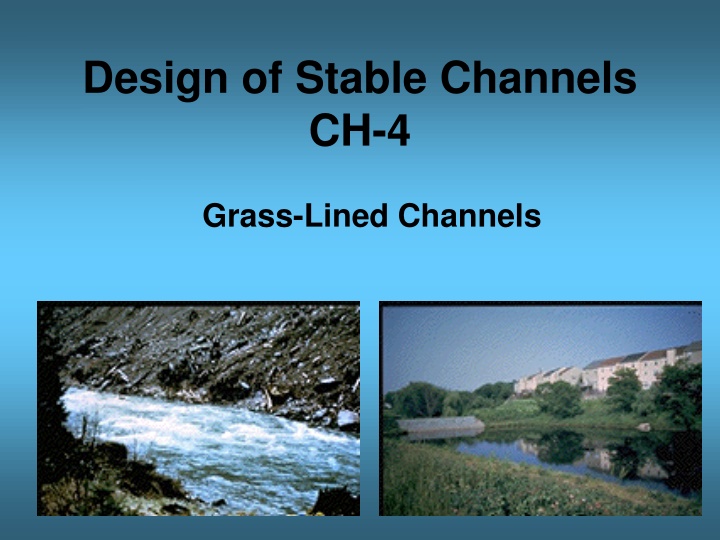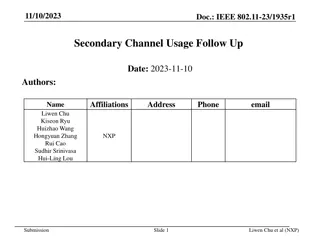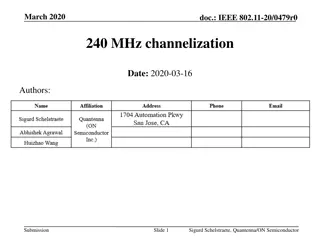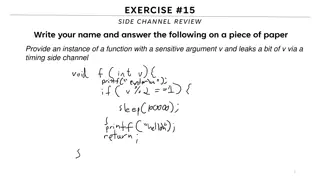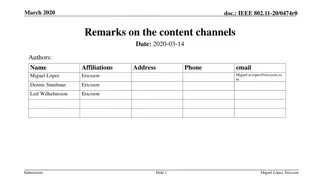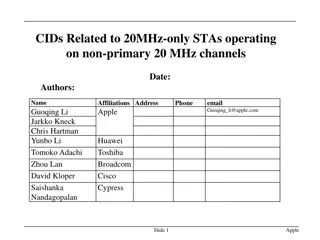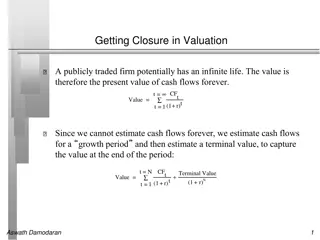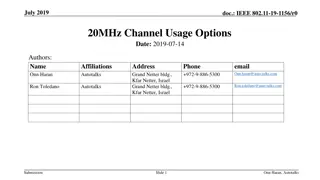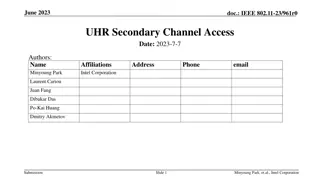Design of Stable Channels
Grass-lined channels are commonly used in urban areas to manage storm water flow. The design considerations differ from concrete-lined channels due to susceptibility to erosion and inundation. Understanding the relationship between vegetation, channel roughness, and flow velocity is essential for creating stable channels. This guide provides insights into selecting vegetal retardance, Mannings n-URh relationships, maximum permissible velocities, freeboard requirements, and a step-by-step design procedure for creating effective grass-lined channels.
Download Presentation

Please find below an Image/Link to download the presentation.
The content on the website is provided AS IS for your information and personal use only. It may not be sold, licensed, or shared on other websites without obtaining consent from the author.If you encounter any issues during the download, it is possible that the publisher has removed the file from their server.
You are allowed to download the files provided on this website for personal or commercial use, subject to the condition that they are used lawfully. All files are the property of their respective owners.
The content on the website is provided AS IS for your information and personal use only. It may not be sold, licensed, or shared on other websites without obtaining consent from the author.
E N D
Presentation Transcript
Design of Stable Channels CH-4 Grass-Lined Channels
Providing Channel Protection For bare soil channels, allowable shear stress is small Results in channels that are wide with shallow flows If the channel can be protected from erosion, then allowable velocities can be increased Vegetation! Grass-lined channels are common in urban areas to transmit storm water Usually preferred to concrete lined channels Design is different because these channels cannot withstand lengthy inundation and wetness Channel Roughness Manning s n becomes a strong function of U, Rh, and vegetation type (height) Experimental work has shown that Manning s n can be related to URh
Retardance Classes (SCS, 1969)
Guide to Selection of Vegetal Retardance
Mannings n-URhRelationship Temple et al. (1987) developed the following approximation for the Manning s n URhrelationships: ( ) . 0 ln 01329 . 0 exp = h UR I n ( ) ( ) 2 2971 . 0 + 09543 ln . 4 16 UR h I Retardance A B C D E 10.000 7.643 5.601 4.436 2.876
Maximum Permissible Velocities Suggested by SCS based on channel slope and erodibility of soil
Freeboard Requirement Freeboard requirement (should be at least 30 cm): 2 U 2 = + . 0 15 F g
Design Procedure Stage 1 1. Assume an n value and determine value of URh 2. The lower bound retardance of the channel is specified based on the type of grass 3. Select maximum permissible velocity and compute the value of Rh 4. Use Manning s equation and the assumed value of n to compute a URh 5. Repeat steps 1-4 until the values of URhagree 6. Determine A from the design flow and maximum permissible velocity 7. Determine the channel proportions for the calculated values of Rhand A
Design Procedure Stage 2 1. Assume a depth of flow for the channel identified in Stage 1 of the design and compute A and Rh 2. Compute the average velocity, U = Q/A 3. Compute URhusing steps 1 and 2 4. Use the results of step 3 to determine n using the upper bound retardance 5. Use the n from step 4, Rhfrom step 1, and the Manning equation to compute U 6. Repeat steps 1 through 5 until values of U in steps 2 and 5 are approximately equal 7. Add the appropriate freeboard
Example Design a triangular grass-lined channel to handle an intermittent flow of 0.7 m3/s. The channel is to be excavated in an easily erodible soil (d50= 1 mm, = 35o) on a longitudinal slope of 2%, and lined with Bermuda. During the early stages of the channel development, the height of the grass will be maintained at 4 cm; during the latter stages of development, the Bermuda will be at a height of 30 cm.
